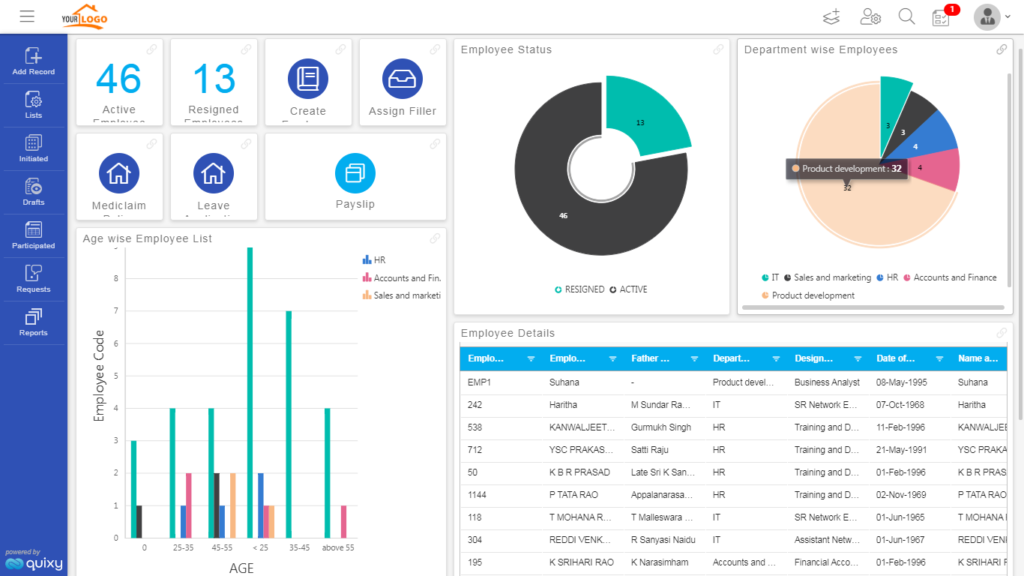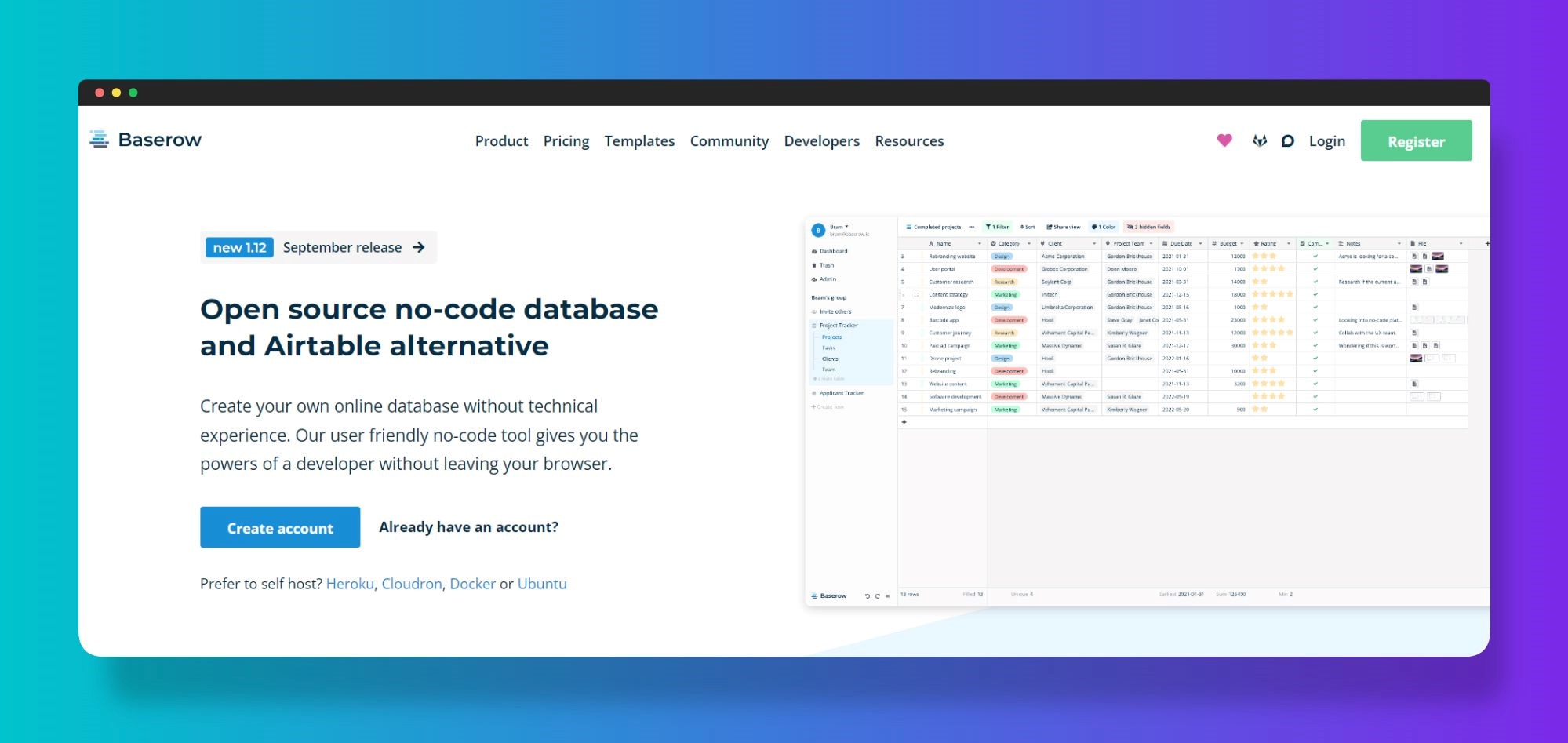Why No-Code is the Future of Open System Database Development for Organizations
Why No-Code is the Future of Open System Database Development for Organizations
Blog Article
A Comprehensive Guide to Executing Scalable Databases Without the Requirement for Coding Expertise
In the contemporary landscape of data management, the ability to execute scalable databases without coding knowledge is ending up being progressively necessary for companies of all dimensions. This guide aims to illuminate the process, concentrating on straightforward devices and user-friendly interfaces that debunk data source setup. By taking a look at crucial functions, efficient techniques for implementation, and ideal methods for continuous administration, we will resolve just how also non-technical individuals can confidently browse this complicated terrain. What are the crucial aspects that can really empower these customers to utilize scalable databases effectively? The solutions might redefine your method to data monitoring.
Recognizing Scalable Databases
In the world of contemporary information administration, scalable data sources have become a vital service for companies seeking to manage boosting quantities of info successfully. These databases are made to suit growth by permitting the smooth addition of sources, whether through straight scaling (including much more equipments) or vertical scaling (updating existing machines) This versatility is vital in today's fast-paced electronic landscape, where data is produced at an unmatched rate.
Scalable data sources typically use dispersed architectures, which allow information to be spread across several nodes. This circulation not just boosts efficiency yet also offers redundancy, making certain information availability even in case of equipment failings. Scalability can be a crucial aspect for numerous applications, consisting of e-commerce platforms, social networks networks, and large data analytics, where individual demand can vary substantially.
In addition, scalable data sources commonly include durable information uniformity designs that stabilize efficiency and integrity. Organizations has to consider their specific requirements, such as read and write speeds, data integrity, and mistake resistance when picking a scalable data source service. Eventually, comprehending the underlying principles of scalable data sources is vital for companies aiming to flourish in an increasingly data-driven world.
Key Features to Search For
When evaluating scalable databases, numerous crucial features are paramount to guaranteeing ideal performance and integrity. Primarily, consider the architecture of the database. A dispersed design can improve scalability by allowing information to be saved throughout multiple nodes, promoting smooth information accessibility and handling as need boosts.
One more vital attribute is information dividing, which allows effective administration of large datasets by dividing them into smaller sized, extra workable pieces (no-code). This approach not only enhances performance yet likewise simplifies resource allowance
Additionally, seek robust duplication capabilities. This attribute guarantees information redundancy and high accessibility, decreasing downtime during upkeep or unexpected failings.
Performance tracking devices are also essential, as they supply real-time understandings into system health and wellness and operational effectiveness, enabling timely modifications to preserve optimum performance.

User-Friendly Database Devices
Simpleness is a critical aspect in the design of user-friendly database devices, as it improves ease of access for users with differing levels of technological know-how. no-code. These tools focus on user-friendly user interfaces, making it possible for customers to produce, manage, and question databases without requiring considerable programs knowledge
Trick features usually include drag-and-drop performance, aesthetic data modeling, and pre-built templates that enhance the configuration process. Such devices commonly offer led tutorials or onboarding procedures that facilitate individual involvement and reduce the understanding curve. In addition, seamless combination with popular data resources and solutions guarantees that users can conveniently import and export information, further streamlining procedures.

Furthermore, durable support and area sources, such as online forums and documents, enhance the customer experience by providing aid when required. Generally, user-friendly data source tools empower companies to harness the power of scalable databases, making information management available to everyone included.
Step-by-Step Implementation Overview
How can companies effectively apply scalable databases to fulfill their growing information needs? The procedure starts with determining certain information requirements, consisting of the quantity, variety, and rate of data that will be refined. Next, organizations need to assess straightforward database devices that provide scalability attributes, such as cloud-based services or took care of database services.
As soon as the best device is selected, the next action involves configuring the data source environment. This includes establishing up instances, defining individual permissions, and developing data frameworks that line up with business objectives. Organizations needs to then migrate existing data official source right into the new system, ensuring information stability and minimal disturbance to procedures.
Post-migration, carrying out extensive screening is vital; this includes efficiency screening under various tons problems to ensure the system can manage future development - no-code. In addition, it is necessary to educate staff on the data source monitoring interface to promote smooth usage
Best Practices for Administration
Efficient management of scalable databases needs a strategic strategy that focuses on continuous tracking and optimization. To attain this, companies should implement robust surveillance devices that provide real-time insights right into database performance metrics, such as inquiry feedback times, resource usage, and deal throughput. Consistently evaluating these metrics can help determine traffic jams and locations for renovation.

Regular backups and catastrophe recuperation strategies are important to secure information this content honesty and availability. Establishing a routine for checking these back-ups will certainly make certain a dependable healing process in situation of an unanticipated failing.
Additionally, efficiency tuning need to be a constant procedure. Readjusting indexing approaches, enhancing questions, and scaling resourcesâEUR" whether vertically or horizontallyâEUR" will certainly help preserve optimal performance as use demands progress.
Lastly, promoting a society of understanding sharing amongst staff member will certainly enable constant understanding and adaptation, making sure that the management of scalable databases continues to be efficient and reliable gradually.
Conclusion
Finally, the execution of scalable data sources can be effectively accomplished without coding expertise with the use of straightforward tools and intuitive interfaces. By adhering to the described methods for arrangement, information movement, and efficiency screening, people can navigate the complexities of database management easily. Highlighting finest techniques for recurring upkeep and collaboration further enhances the capability to handle scalable databases effectively in a swiftly progressing data-driven setting.
In the contemporary landscape of information monitoring, the ability to execute scalable databases without coding competence is ending up being progressively necessary for companies of all dimensions.In the realm of contemporary data management, scalable databases have arised as a crucial service for go to these guys companies seeking to deal with increasing volumes of details successfully.Moreover, scalable databases frequently feature durable information consistency models that stabilize efficiency and dependability.How can companies properly apply scalable databases to meet their growing information needs? Next, organizations should review straightforward database devices that use scalability functions, such as cloud-based solutions or took care of database solutions.
Report this page